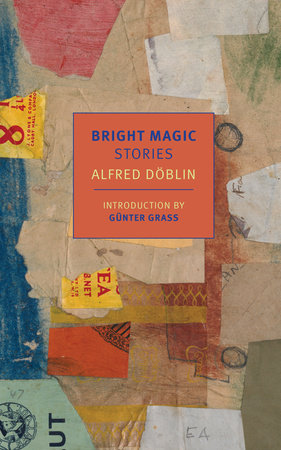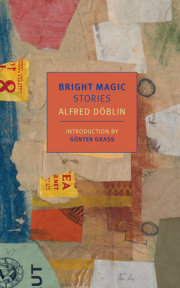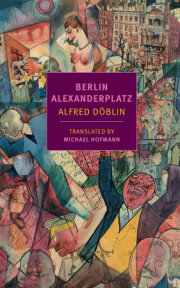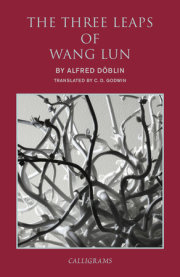Alfred Döblin (1878–1957) was born in German Stettin (now the Polish city of Szczecin), to Jewish parents. When he was ten his father, a master tailor, eloped with a seamstress, abandoning the family. Subsequently his mother relocated the rest of the family to Berlin. Döblin studied medicine at Friedrich Wilhelm University, specializing in neurology and psychiatry. While working at a psychiatric clinic in Berlin, he became romantically entangled with two women: Friede Kunke, with whom he had a son, Bodo, in 1911, and Erna Reiss, to whom he had become engaged before learning of Kunke’s pregnancy. He married Erna the next year, and they remained together for the rest of his life. His novel The Three Leaps of Wang Lun was published in 1915 while Döblin was serving as a military doctor; it went on to win the Fontane Prize. In 1920 he published Wallenstein, a novel set during the Thirty Years’ War that was an oblique comment on the First World War. He became president of the Association of German Writers in 1924, and published his best-known novel, Berlin Alexanderplatz, in 1929, achieving modest mainstream fame while solidifying his position at the center of an intellectual group that included Bertolt Brecht, Robert Musil, and Joseph Roth, among others. He fled Germany with his family soon after Hitler’s rise, moving first to Zurich, then to Paris, and, after the Nazi invasion of France, to Los Angeles, where he converted to Catholicism and briefly worked as a screenwriter for Metro-Goldwyn-Mayer. After the war he returned to Germany and worked as an editor with the aim of rehabilitating literature that had been banned under Hitler, but he found himself at odds with conservative postwar cultural trends. He suffered from Parkinson’s disease in later years and died in Emmendingen in 1957. Erna committed suicide two months after his death and was interred along with him.
Damion Searls is a translator from German, French, Norwegian, and Dutch and a writer in English. His own books include What We Were Doing and Where We Were Going, The Inkblots, and The Philosophy of Translation. He received the Helen and Kurt Wolff Translator's Prize in 2019 for Uwe Johnson's Anniversaries.
Günter Grass (1927–2015) was born in the Free City of Danzig, to a German father and a Kashubian Polish mother. He published The Tin Drum in 1959 and soon became one of Germany’s most prominent postwar intellectuals. Throughout his life he was an outspoken Social Democrat and critic of German reunification. He went on to publish numerous novels, including Crabwalk and two sequels to The Tin Drum: Cat and Mouse and Dog Years. In 1999, he was awarded the Nobel Prize in Literature. He died in Lübeck at the age of eighty-seven.












